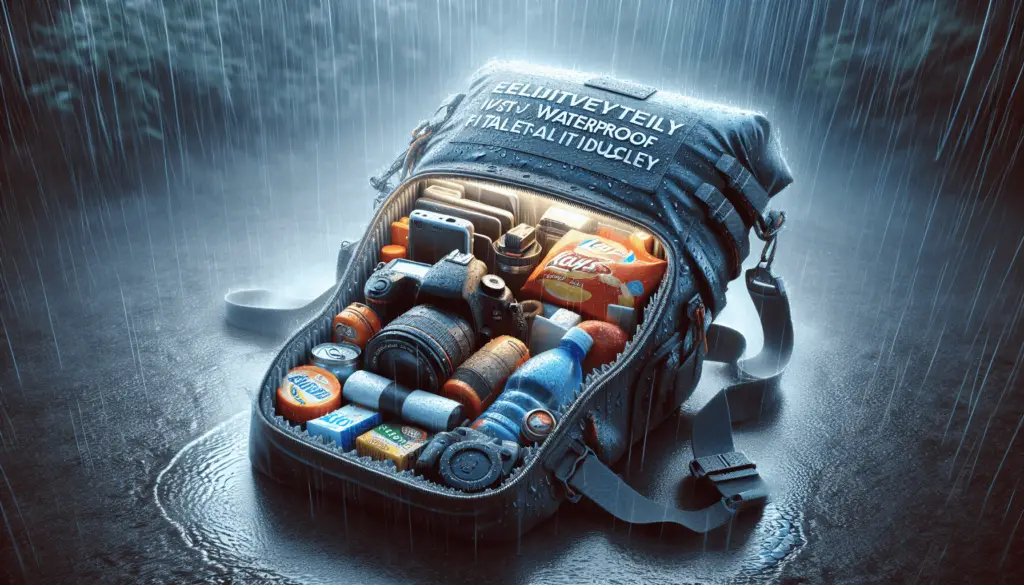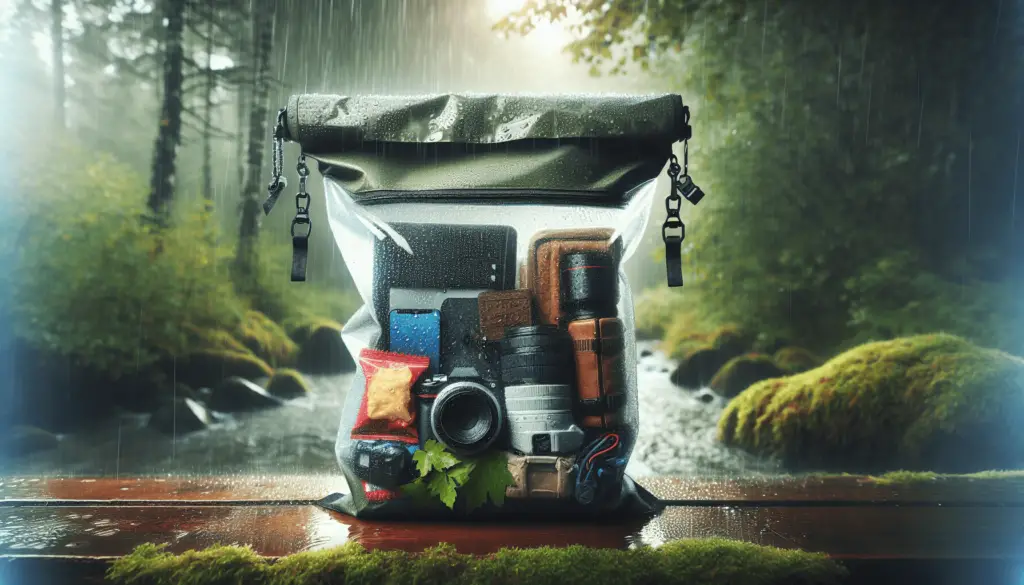Have you ever been caught in the rain while out hiking or biking, only to find your phone, wallet, and other gear soaked through? It’s a frustrating experience that can easily be avoided with the right waterproofing essentials. Learn how to keep your gear dry in any weather with these simple tips and tricks.

Importance of Waterproofing Gear
Ensuring that your gear stays dry is essential not only for your comfort but also for its longevity. Water damage can ruin electronics, degrade fabrics, and even lead to mold growth. By investing in the proper waterproofing essentials, you can protect your gear and ensure that it lasts for many adventures to come.
Protect Your Electronics
Your phone, camera, and other electronics are particularly vulnerable to water damage. By using waterproof cases or bags, you can keep them safe and functional even in the wettest conditions. Make sure to test the waterproofing of these cases before heading out to ensure they are still effective.
Preserve Your Clothing
While some fabrics are naturally more water-resistant than others, it’s always a good idea to add an extra layer of protection. Waterproof jackets, pants, and even socks can help keep you dry and comfortable during outdoor activities. Look for breathable materials to prevent sweat build-up while staying dry.
Types of Waterproofing Materials
There are several types of waterproofing materials available, each with its own strengths and weaknesses. Understanding the differences between them can help you choose the right products for your specific needs.
Waterproof Sprays
Waterproof sprays are a popular choice for treating fabrics, footwear, and outdoor gear. They create a protective barrier that repels water, preventing it from seeping into the material. These sprays are easy to apply and can be used on a wide range of items.
Waterproof Wax
Wax-based waterproofing products are commonly used on leather goods, such as boots and jackets. They provide a durable waterproof coating that also conditions the leather, extending its lifespan. However, wax can darken the color of lighter materials, so it’s essential to test it in a small area first.
Waterproof Sealants
Waterproof sealants are often used on seams, zippers, and other areas where water could penetrate. These products create a flexible barrier that prevents leaks without compromising the flexibility of the material. They are especially useful for repairing small tears or holes in waterproof gear.

How to Waterproof Your Gear
Waterproofing your gear is a straightforward process that can be done at home with the right products. Here’s a step-by-step guide to help you protect your valuable gear from the elements.
Clean Your Gear
Before applying any waterproofing treatment, make sure your gear is clean and dry. Dirt and grime can prevent the waterproofing agent from adhering properly, reducing its effectiveness. Use a mild detergent and water to clean your gear, then allow it to air dry completely.
Apply the Waterproofing Product
Depending on the type of waterproofing material you choose, the application method may vary. Follow the manufacturer’s instructions carefully to ensure proper coverage and protection. Pay special attention to seams, zippers, and other potential weak points in your gear.
Allow to Cure
After applying the waterproofing product, allow your gear to cure fully before using it in wet conditions. This typically involves letting it sit for a specified amount of time to ensure the protective coating has bonded to the material. Avoid using or storing the gear in a humid environment during this curing period.
Additional Waterproofing Tips
In addition to treating your gear with waterproofing products, there are other steps you can take to keep it dry in any weather. These simple tips can make a big difference in the longevity and performance of your gear.
Choose Waterproof Gear
When shopping for new outdoor gear, prioritize items that are already waterproof or water-resistant. This can save you time and effort in treating them with additional waterproofing products. Look for gear with sealed seams, waterproof zippers, and other features that provide enhanced water protection.
Use Waterproof Storage
Invest in waterproof bags, cases, and containers to protect your gear during transport and storage. These items can prevent water from seeping in and damaging your valuables, especially when you’re on the move. Consider using waterproof liners or dry bags within your backpack or luggage for added protection.
Regular Maintenance
Over time, the waterproofing properties of your gear may degrade due to wear and tear. To maintain its effectiveness, regularly inspect and reapply waterproofing treatments as needed. Check for signs of water absorption, such as dark spots or dampness, and take action to prevent further damage.
Conclusion
Keeping your gear dry in any weather is a crucial part of outdoor adventures. By understanding the importance of waterproofing, choosing the right materials, and following proper procedures, you can ensure that your gear stays protected and functional. With these waterproofing essentials, you can enjoy your favorite activities without worrying about the weather.
